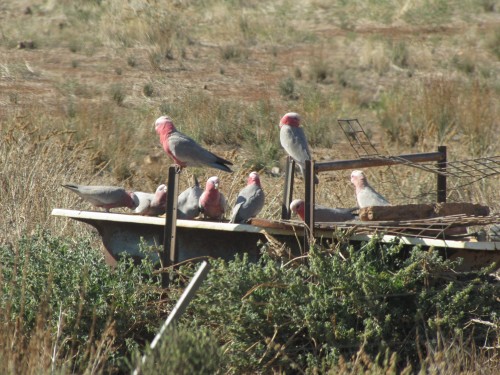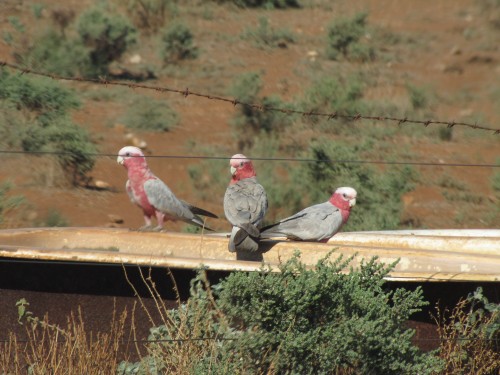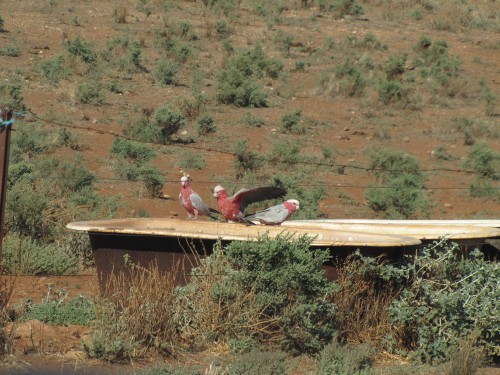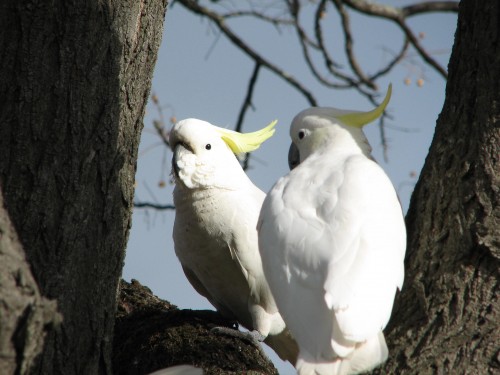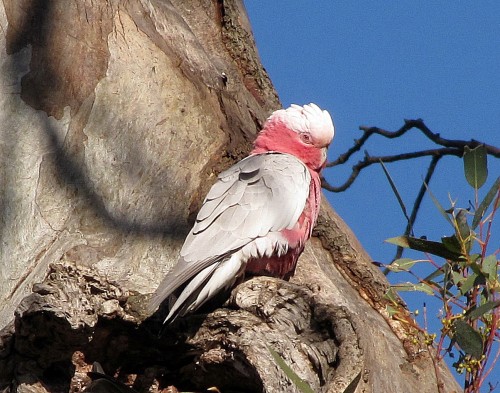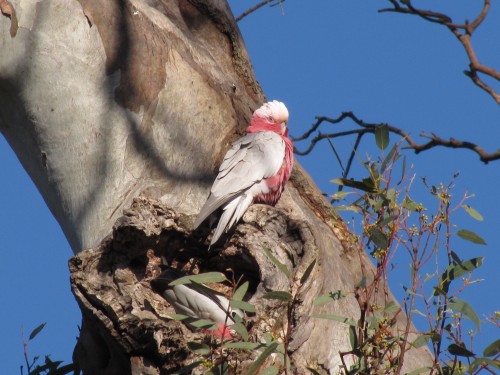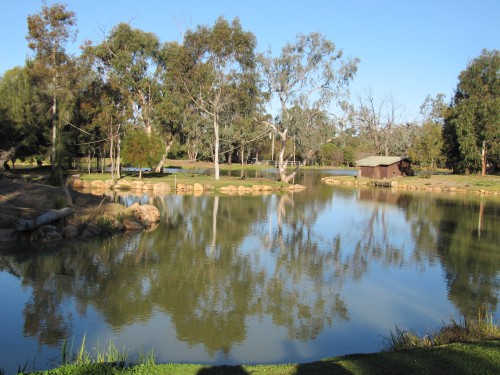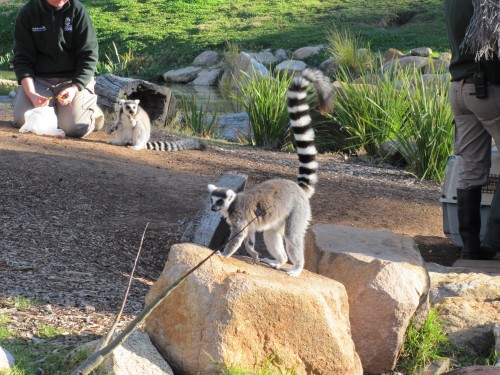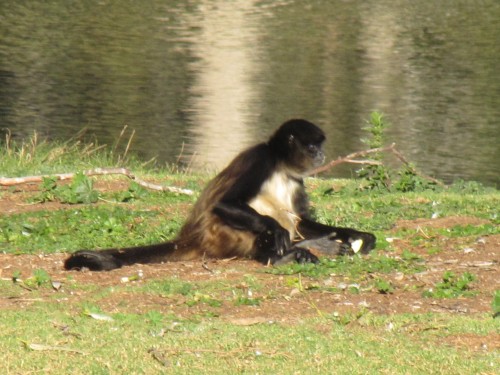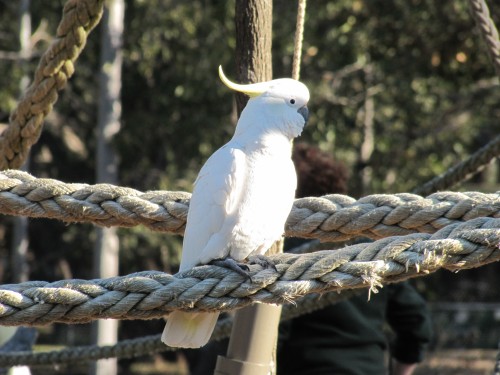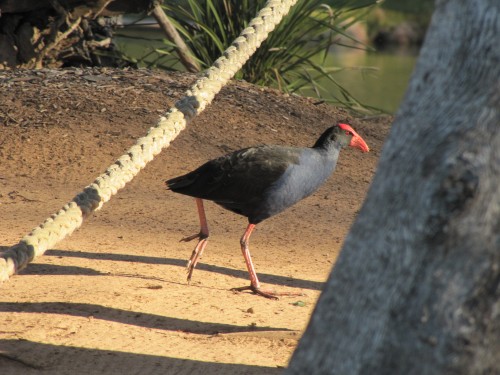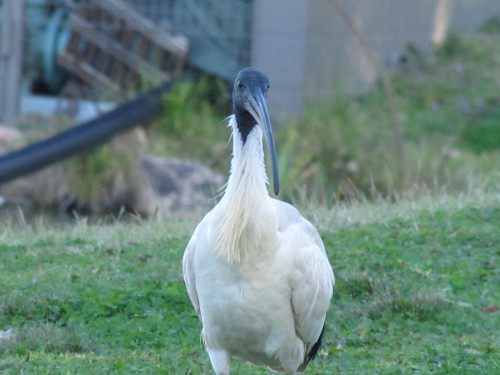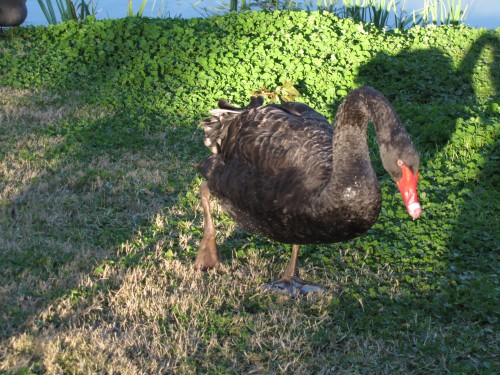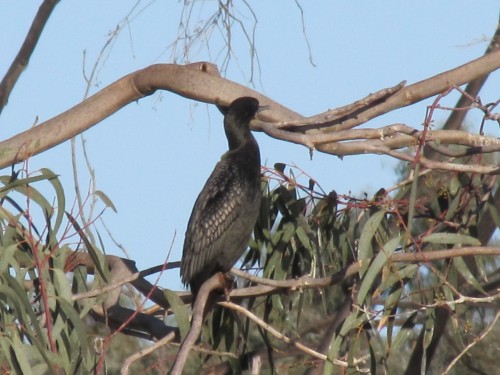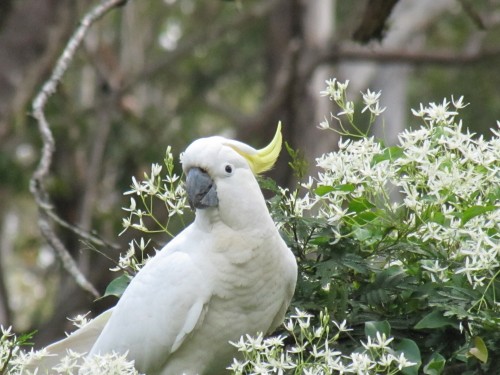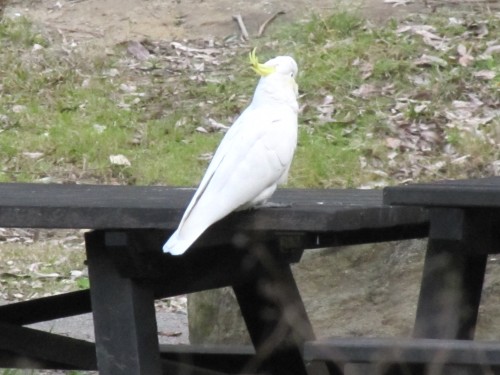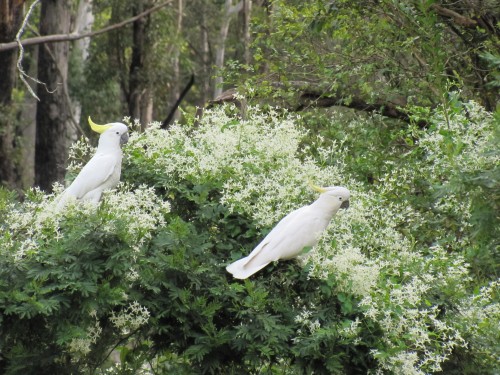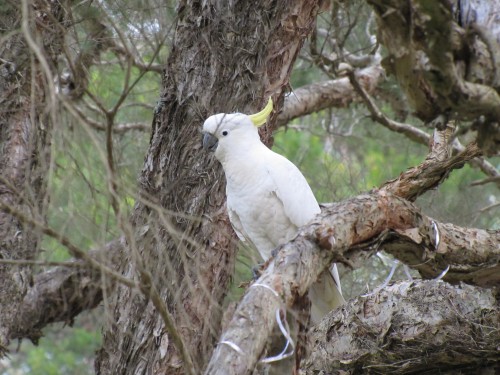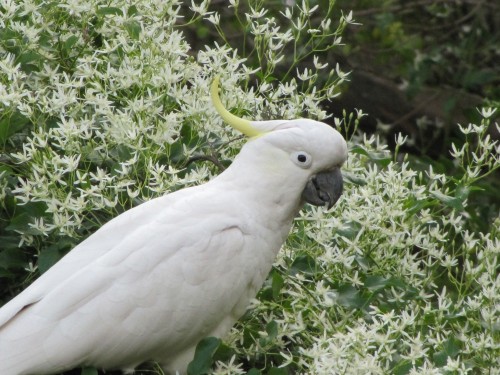A bunch of thirsty Galahs
In my post a few days ago I posted several photos of several Mallee Ringnecks taken just north of Peterborough in the mid-north of South Australia. As I left the reserve where I took those photos, I drove slowly along the dirt road back towards the town. I stopped several times to take a few photos of the local birds.
This was early in March and we were having a particularly hot spell of weather. By the time I had left the nature reserve, the air was beginning to really heat up. I thought that it might be prudent to head back to my brother-in-law’s home and lay low during the worst of the heat. On my way home, I spotted several small flocks of Galahs having a drink at several old baths in the nearby paddocks. The local farmers had placed these bath tubs in their horse paddocks, brought the water pipe to the bathtubs, installed floats and thus provided a water source for their horses and sheep.
Naturally, the Galahs have endorsed this installation by also indulging in an early morning drink before the heat of the day to come. The second photo (the one immediately below) is unfortunately spoiled by the thin line of the fencing wire passing across the face of two of the birds. I did not notice this when taking the photo. It was only when I downloaded the photo and enlarged it on my computer that I noticed the wire. Such are the hazards of photography.
Some unexpected visitors
This morning I did a small load of washing. I actually enjoy doing this because it gets me outside and away from the computer for a while. It also has the benefit of getting me outside where the birds are, and with my eyes cast skywards I often see birds that I might have missed – like the time I saw a Peregrine Falcon overhead in the last moments of a very fast stoop. Awesome.
It also has the benefit of being able to hear more birds and I enjoy listening to all of their calls and trying to identify them without looking. This is a good way of honing one’s identifiction skills. After over 30 years of living on our little patch of mallee scrub here in Murray Bridge, I have become accustomed to our bird life and immediately notice something different calling. That’s what happened this morning.
I had just finished hanging out the washing when I heard a bird calling loudly. Two Sulphur-crested Cockatoos had flown in and landed in our of our pine trees. I had enough time to grab the binoculars and see that they were testing out some of the cones on one of the trees. Obviously the cones where not to their taste or not ready for eating because they flew off again a minute later. I didn’t get a photo so the one above was taken some years ago in Adelaide.
This was a significant sighting for the birds in our garden. I think my memory is correct – this is only the second time in over 30 years I have recorded this species in our garden. They are not usually seen here in Murray Bridge (80km east of Adelaide) though they are very common in the Adelaide region and throughout the Adelaide Hills zone. This is despite there being plenty of suitable feeding spots and nesting hollows, especially along the River Murray. I think I heard one screeching as it flew overhead a few days ago, but I was in the foggy early morning sleep zone. I initially thought it was a Little Corella, but now I am not so sure.
Perhaps these were some scouts looking for new places to live.
Birds and animals – Western Plains Zoo
After leaving Sydney and our family with some sense of sadness – the grandchildren wanted us to stay – we travelled to Dubbo. As we entered the rural city we unfortunately had a little bingle in our near new car. Trying to negotiate a round-about I side-swiped another car. I must admit I was at fault; I was in the wrong lane. Happily no-one was hurt, just a little shaken, and both cars were still drivable. I exchanged details with the other driver for insurance claims and we were on our way again 20 minutes later. (Postscript: back home some weeks later the car looks like new again. Our local repairer did a great job.)
By the time we had settled into our cabin in the caravan park it was dark, so any bird watching in the area had to wait. We had a delightful dinner with cousins of my wife that evening, and next morning we gathered at the local crematorium for the funeral of a cousin. While it was a sad occasion, we were pleased to be able to catch up with so many of the family. After lunch together we had a few hours of daylight left, so we drove the short distance to the Western Plains Zoo on the southern edge of Dubbo. This zoo was set up many years ago as an adjunct of Taronga Zoo in Sydney. We had long desired to visit but this was our first opportunity.
We didn’t enter the zoo proper – just the picnic area near the entrance. There is no charge to visit this lawned area. The extensive picnic grounds look over an artificial lake (see top photo above). There are two islands in the lake, each one home to some animals. The closest caters for a family of Ring-tailed Lemurs (see photo above) while the other is home to a group of Black-handed Spider-monkeys (see photo below).
It was feeding time for the monkeys and lemurs, so we sat there in the calm, balmy evening light watching the animals on the islands. As we watched I was able to get a few photos of some of the local bird life, including the Sulphur-crested cockatoo (see photo below) who was obviously a regular visitor to the islands to benefit from any food scraps the animals might overlook. The ropes in the photo are actually there for the entertainment of the lemurs. They also make good perches for a cockatoo.
Just below the cockatoo was a Purple Swamphen, also on the lookout for a free handout. These two birds are wild birds which have come in to the zoo grounds because there is abundant food for the taking. Both probably also check out the picnic grounds for food scraps left behind by people visiting.
The Australian White Ibis (see below) is another species which takes over picnic grounds in search of an easy meal. This individual was alone at the time, but when the zoo is crowded it is probably joined by many more. On our visit the next day we saw large numbers of this species, some of them nesting in the grounds of the zoo (I will show photos of this on another post soon).
In some parks in many places in Australia, the White Ibis has become a serious pest species, harassing people having a quiet picnic by snatching food from them, even to the point of jumping on to a picnic table loaded with human food. Being 65 – 75cm (about 2 feet) in height they can be very intimidating to young children, especially if the children are walking around with food – an ice-cream for example.
Another bird which can be intimidating is the Black Swan (see photo below). This was the only individual we saw that evening, but it came towards where we were sitting in a very determined manner, then waddled up the bank and right up to about a metre from us. When we produced no food it started grazing on the abundant grass all around us. This is another species which is a pest in some parks and picnic grounds. Their beaks can give a nasty bite and their wings, if used, can give some unsuspecting person an nasty whack.
Don’t feed the birds
I’ve written on this topic many times before, but it is worth saying it again, just to educate new visitors to this site. PLEASE DO NOT FEED OUR NATIVE AUSTRALIAN BIRDS. Human food is actually dangerous and even deadly to many of our birds. Added to that risk is what is happening with birds like ducks, ibises and swans: they look to people for free handouts and very quickly become major pests.
If you want to encourage Australian native birds into your life – and into your garden – provide 3 or 4 or more bird baths for them. Plant Australian native plants so they have their natural food, places to shelter and sites for their nests. Read more about this topic here and here.
Of course there are many birds which do not bother people and just get on with their lives. One such species is the Great Cormorant shown below. It is just having a break from searching the lake for fish, frogs and tadpoles.
So this was our first taste of the zoo. We returned the next day for a whole day visit. Photos of the birds we saw – and a few animals too – in the coming days.
Stayed tuned.
Sulphur Crested Cockatoos up close
Over recent days I have been sharing some photos of some of the birds seen on a recent visit to Lane Cove National Park. Today it’s the turn of several Sulphur-crested Cockatoos.
One of the birds flew in and settled on our picnic table within minutes of us starting lunch (see photo below). When it didn’t get any handouts from us, it flew over to join another few birds feeding on a clematis bush in full flower.
I love taking photos of this species, one which is widespread across much of eastern Australia. On the other hand, I realise that not all people share my love of this species. In numbers they can be a pest species. They can easily cause havoc on trees, stripping the leaves off branches. People who own houses with plenty of timber in the structure have experienced the destructive nature of these birds.
Further reading:
